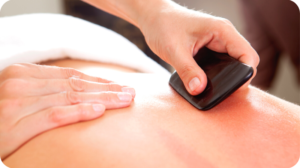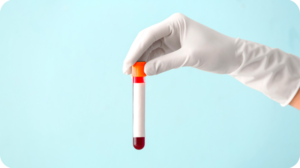Saci McDonald was a massage therapist in 1989 when she became interested in the healing potential of breathwork. She subsequently served a four-year apprenticeship with Maia Dhyan and, in 1991, began leading breathwork groups in the U.S. and UK. She began her education in Energy Kinesiology (EK) in 1996, earning a certificate from The Kinesiology Institute, and eventually studying with EK masters Dr. Sheldon Deal and Carla Hannaford, PhD. Saci completed Emotional Freedom Technique (EFT) training levels 1 and 2 as a support to her energy kinesiology practice, and is a graduate of The Institute of Classical Homeopathy in San Francisco. A native of Scotland, she lives in Marin, California, with her husband, Sean. Healplace is proud to welcome her to our community of providers and our integrated platform launching in the near future.

Q: What drew you to become a breathwork and energy kinesiology practitioner?
A: It started by chance. I mentioned to a group of my friends that I had been in a minor car accident and one of the guys said he was in massage school and began massaging my sore neck. I had never had a massage before and I was amazed that there was that much feeling in my body. So I decided to study massage. Shortly after I completed my training, I discovered breathwork, a meditation practice, and then energy kinesiology. Where massage is a maintenance practice, energy kinesiology is solving the puzzle of an ailment and getting to the root of the issue by asking and listening to the body. It’s the practice of addressing blockages or imbalances that can manifest in physical and emotional pain in the body. I’m tenacious, so the detective aspect of the practice appealed to me. Breathwork is a natural complement to energy kinesiology. It also seeks to resolve blockages in the body. What l like so much about these two practices is that they are common sense.
Q: What is your philosophy as a practitioner?
A: I believe there is a natural path to healing through the innate intelligence of your body and breath. You simply have to know how to access the language of the body. Like French and German, the body has its own language. It cracks me up. How many thousands of people have you talked to? Like your uber driver or someone at a bus stop. And yet most people ignore their own bodies. It’s insane that we don’t communicate more with our bodies. As a culture we are led to believe someone else has all the answers to our healing. Yet over and over again, my experience has been that our body knows best.
Q: What is your process?
A: With energy kinesiology I use muscle testing, a highly effective biofeedback technique to ask the body where and what the issue is. I don’t care what pain a person comes to me with, I’m going to ask their body four questions: is the issue physical, is it nutritional or biochemical, is it psychological or emotional, or is it an “energy” problem (a blockage of the Chakras or energy meridians). Nine times out of ten, the body is experiencing imbalance in two or more of those areas. Not only is muscle testing laser-like honing in on uncovering the blockages, it’s also laser sharp at finding out what techniques will clear the issue. Breathwork is ultimately the same thing—seeking out the blocked or stuck areas that are holding memories in the body. Breathwork, though, is more passive. You lie down flat on the floor and surrender yourself to your breath. You relax and allow that. Your breath is in the driver’s seat. Your mind is aware, but essentially on vacation. It’s just noticing, with nothing to fix, nothing to say, nothing to chase, nothing to correct, just awareness and presence. Both energy kinesiology and breathwork bring us back into the body. In our modern world, there are so many outward distractions that we are disconnected from our true nature. Our hearts and minds have separated. People are living from the neck up, and there is a lot of deadness below. Kinesiology and breathwork restore that connection, creating a feeling of wholeness, calm, and peace.
Q: How has the current need for remote interaction impacted your practice?
A: To be honest, I’ve found it kind of remarkable how well both my breathwork and energy kinesiology practices work online. My process is very similar to working in person. With breathwork, I let my clients know, it may be a big experience. There might be a lot of sensation happening in the body. I tell them that their body can handle it because their breath is never going to put them in harm’s way. Amazingly enough, I can practice energy kinesiology remotely. Instead of muscle testing a person as I normally would do, I use my body as a surrogate and test the client that way. I know it sounds a bit out there, but it just works.
Q: What does “heal” mean to you?
A: It goes back to restoring a sense of connection with yourself, the feeling of “home” within you, and that no matter what is going on around you, you maintain that sense of peace. The body really wants to heal, so when the right conditions are present it happens really fast. Energy kinesiology and breathwork are two of the fastest ways I know for the body to heal itself. It’s humbling to watch.
Show some love if you liked this post!





